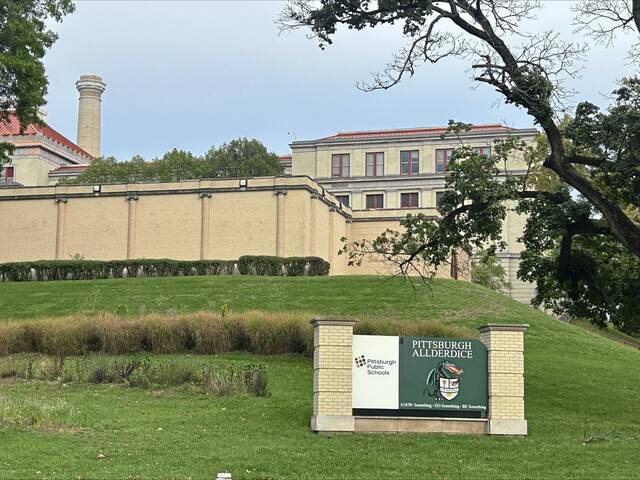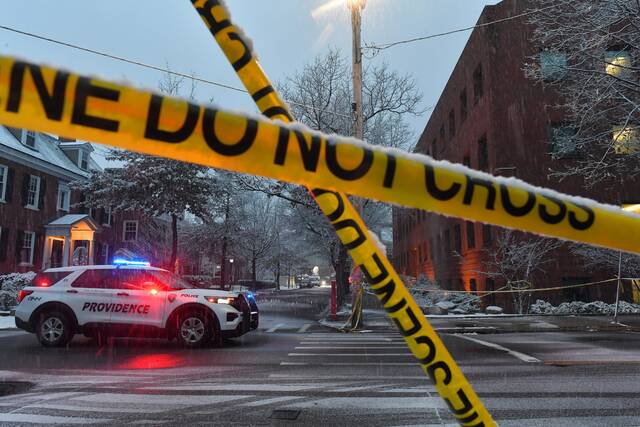A combined system of 15 community colleges and 10 state universities would treat both tiers as equals, and they would equitably split a 15% funding increase in his proposed state budget, Gov. Josh Shapiro said Tuesday.
In an appearance at the Community College of Allegheny County in Pittsburgh, the governor pushed back against those with doubts about his plan to unite two-and four-year campuses and to cap tuition and fees for students from median income households and under at no more than $1,000 per semester.
Community colleges would not be merged into or “taken over” by the State System of Higher Education and its 10 member universities, the 11-page plan, dubbed a “Blueprint for Higher Educatioin,” states.
“Rather, the intent is to create an entirely new public postsecondary system with a new governance structure,” it read. “Each institution plays an important role in serving the needs of our diverse student population and the state’s economy.”
Thousands of employees at those two- and four-year institutions are union members and their representation status would not change, according to the plan.
“Existing union contracts will be honored” as the Shapiro administration meets with “higher education leaders, union leaders and legislators to discuss the longer-term implications of the new system to ensure that the needs of our unions are met,” the plan states.
Centralized control versus local campus autonomy has historically been a thorny issue within Pennsylvania’s public campus system. The blueprint does not call for total elimination of campus boards of trustees.
Instead, Shapiro said Tuesday, the intent is to “retain an element of local governance” with ongoing meetings among campus leaders and other stakeholders to bring what that will look like into sharper focus.
The Blueprint plan was released almost simultaneously with the Democratic governor’s appearance.
In his speech, he acknowledged recent skepticism among Republican state lawmakers — an even some in his own party — that there were not enough specifics about how the sweeping plan would be accomplished this year and at what taxpayer cost.
“I understand that sometimes some lawmakers are afraid of big bold things, but now is the time for action,” Shapiro said.
“Lawmakers will want to do some analysis on my plan as they rightfully should,” the governor added. “But analysis should not be used as an excuse for paralysis.”
Shapiro said Pennsylvania is sitting on a $14 billion surplus that would more than support his higher education proposals, which also include a $1,000 boost in PHEAA grants and a new system that ties public campus subsidies to meeting Pennsylvania’s education and workforce goals.
In fact, he asserted that the surplus could fund every idea in his proposed fiscal 2024-25 budget, and “We would still have an $11 billion surplus and we would cut taxes, not raise them.”
As for a timetable, the governor repeated that his goal is to secure state legislative approval for the new system in this year’s state budget cycle, then use 2024-25 to transition as his administration and the campuses hammer out additional details and refine how the overall system will operate.
Shapiro said Pennsylvania “has failed to pay the bill” for students’ futures and for the state’s economic well-being by subsidizing higher education at a rate 49th among the 50 states.
Shapiro said there are tens of thousands of jobs available in the state currently that require some higher education — a degree or certificate — and not enough workers to fill them.
He said that cost and other factors have led to empty seats on the campuses that could give individuals a shot at a better life.
“It’s time to build on this new blueprint for higher education in Pennsylvania and leave a lasting legacy,” Shapiro said.
His noon news conference followed a tour he took of CCAC’s Center for Education, Innovation and Training, a new $43 million building. It houses programs that are intended to prepare students for jobs in high-demand fields from advanced manufacturing to culinary arts.
He was flanked by officials at the news conference, including Allegheny County Executive Sara Innamorato, Pittsburgh Mayor Ed Gainey and others.
The governor watched during his tour as CCAC students worked at some of the high-tech machinery housed in the building.
Among the statewide institutions impacted by Shapiro’s proposed blueprint would be the Western Pennsylvania campuses of PennWest University, Indiana University and Slippery Rock University, as well as community colleges in Beaver, Butler, Westmoreland and CCAC.
“The Community College of Allegheny County’s mission is predicated on providing affordable, accessible high-quality education for all members of our community, and we share the governor’s enthusiasm and commitment to helping Pennsylvanians acquire the education and training they need to realize their full potential,” said CCAC President Quintin Bullock.













